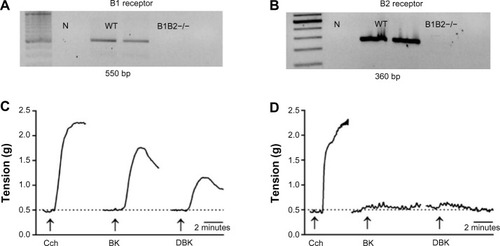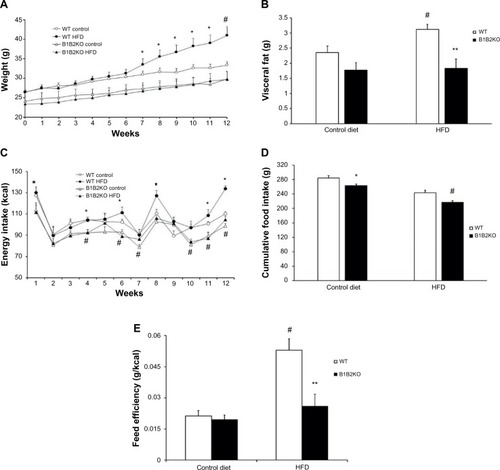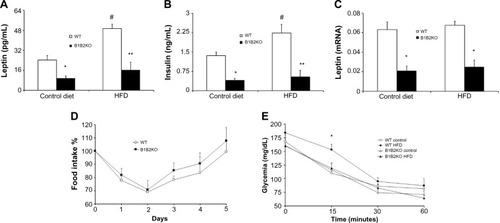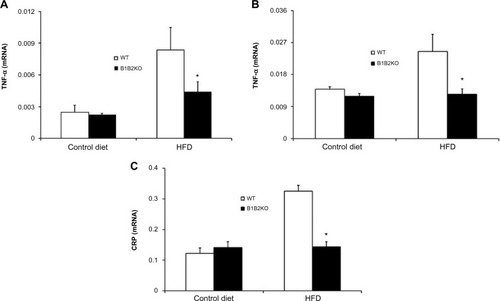Figures & data
Figure 1 Genotyping the kinin B1 and B2 receptor in B1B2KO mice.
Abbreviations: BK, bradykinin; DBK, des-Arg(9)-bradykinin; N, negative control; WT, wild-type; B1B2−/−, B1B2KO; Cch, carbachol.

Figure 2 B1B2KO mice are protected against obesity induced by HFD treatment and present lower food intake and feed efficiency.
Abbreviations: HFD, high-fat diet; WT, wild-type.

Figure 3 B1B2KO mice have low insulin and leptin levels.
Abbreviations: HFD, high-fat diet; WT, wild-type.

Figure 4 B1B2KO mice show high glucose tolerance.
Abbreviations: HFD, high-fat diet; WT, wild-type.

Figure 5 Inflammatory cytokines are downregulated in tissues of B1B2KO mice.
Abbreviations: HFD, high-fat diet; WT, wild-type; CRP, C-reactive protein; TNF-α, tumor necrosis factor-alpha.

